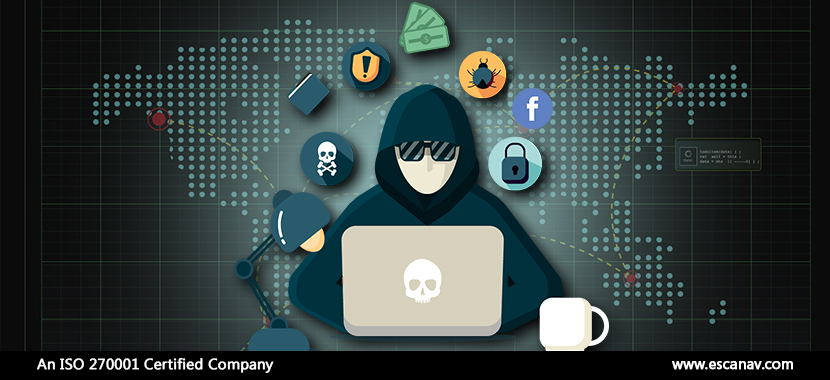In the vast, expanding universe of cybercrime, no other form of crime, demands the exhibition of various emotions ranging from fear to anxiety-like Ransomware does. Motivated by the prospect of financial gains, cybercriminals and hackers’ clandestine art of manipulation is used to extort payments from the victims.
Designed very meticulously designed with a specific purpose in mind, Ransomware holds the victim’s data captive in an encrypted format, making it unusable, until the victim agrees to pay a certain sum of money. Organizations and individuals have suffered alike at the hands of hackers who deploy Ransomware, rendering both entities helpless given the importance of the data that’s held, hostage.
As the attack commences, the victim gets a pop-up notification for a ransom demand. The imagery and the language used on the splash screens invoke a response from the victim, while social engineering techniques add pressure.
A sense of urgency is created due to a specific time limit that the hacker sets. Usually, the decision of containing or managing the threat is taken within the first few minutes. Hence, the element of urgency becomes important.
To force the victim to make the decision quickly, there often is a consequence of payment. The hacker would induce the payments from the victim by threating to make the users data public or deleting parts of data until the payment is made.
In some cases, the hacker also poses as the customer service personnel in an attempt to illicit prompt payment from the user.
While in some other cases, ransomware is not just about getting the data back from the hacker, it could also be about getting your PoS back from the hacker to revive your stagnant or declining business. For retailers, it could become a loss of revenue exercise, since, for them, loss of a day means loss of revenue that can never be recovered.
It is evident that cybercriminals are potently exploiting a few particular traits from human nature. However, we would suggest instead of succumbing to the demands and feeling powerless, the user should build awareness of this technique that would lead to effective strategies and mitigating the impact of the attack.
Awareness against social engineering techniques:
Despite the pressure piled on by the hacker, we advise against giving in to his demands. Given there is no guarantee that the hacker would stay true to his word, plus if his demands are met, he would continue to extort money from more people and that would be a never-ending cycle.
Many victims of cybercrime are reluctant to report the crime, while this turns out to be one of the most important steps. Reporting the crime to law authorities would allow the authorities to take decisive actions towards alleviating the attack and plan the deployment of resources for the same.
Finally, basic steps like the implementation of patch updates, taking back up of critical information and perform tests on restoring data regularly should be made a part of hygiene. Since attacks are getting more sophisticated it is becoming harder to detect them hence preparation, prevention and detection of these threats should be high on agenda.
Hackers use Ransomware to capitalize on the victims fear factor through social engineering methods. Given the hefty costs and disruption to business, prevention and mitigation of these attacks become of prime importance. Hence, a thoroughly planned response to detection and prevention should be put in motion, that is well tested and doesn’t play in the hands of the hackers.
As a response to this threat, eScan has introduced a new technology that combats Ransomware threats. The PBAE (Proactive Behavioral Analysis Engine), is a breakthrough technology that mitigates Ransomware attacks on systems that are protected with eScan Antivirus software.
To read more, please check eScan Blog







